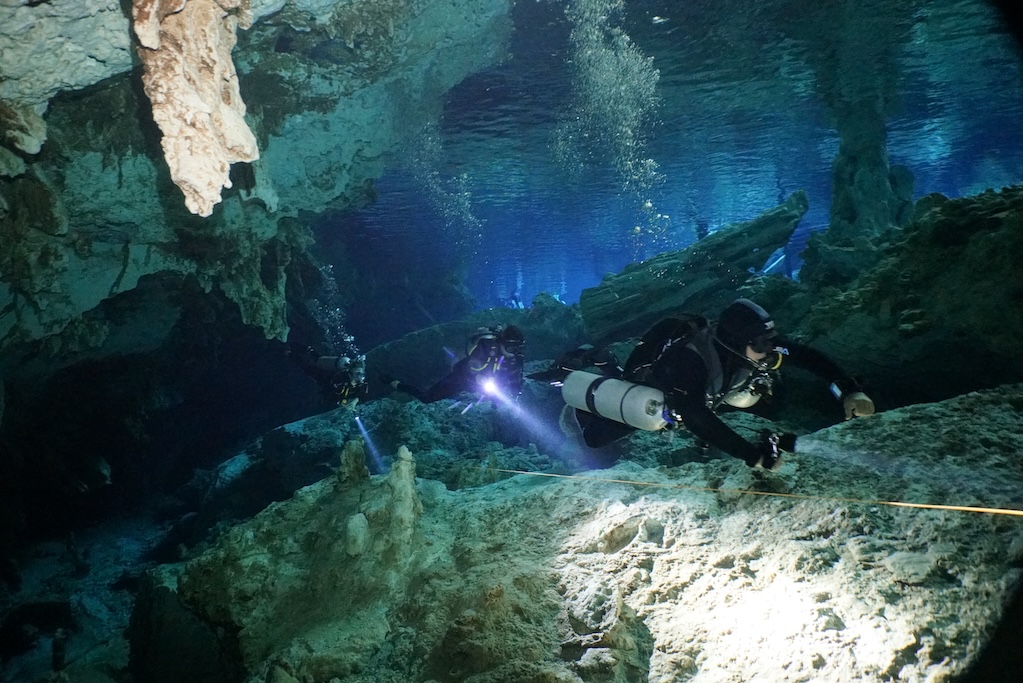How Cenotes Were Born to Be Dived
2025-06-09 17:45:28
The Hidden History Every Diver Should Know

If you’ve ever dived in a cenote, you know it’s unlike anything else on Earth. Waters so clear you feel suspended in mid-air, light displays that defy logic, and a sensation of floating through time itself. But how were these portals to the underworld formed? And more importantly, why are they the perfect setting for diving in Playa del Carmen? We’ll tell you the story—no boring technical jargon, just like we’re sharing a beer after a cenote dive.
The Formation of Cenotes A 65-Million-Year-Old Tale
Let’s take a trip back in time. Picture the Yucatán Peninsula millions of years ago no white sandy beaches or resorts, just a massive coral reef beneath a shallow sea. When sea levels dropped, an enormous limestone platform was exposed, formed by the skeletons of countless marine organisms.
This is where the magic begins
Rain went to work – Rainwater is slightly acidic (thanks to atmospheric carbon dioxide). Over time, it dissolved the limestone, creating a labyrinth of underwater caves.
Ceilings collapsed – Some caves grew so large their roofs could no longer hold. When they caved in, they revealed the natural pools we now call cenotes.
The sea reclaimed its territory – During the last ice age, sea levels rose again, flooding many of these caves and forming the world’s longest underground river systems.
Fun fact The Sac Actun System, near Playa del Carmen, is the longest known underwater cave, with over 380 km explored.
Why Cenotes Are a Diver’s Paradise
If you’ve only dived in the ocean, you’re missing out on a completely different experience. Here are five reasons cenotes are unique
Mind-blowing visibility – While the ocean offers 20–30 meters of visibility (on a good day), cenotes often exceed 100 meters. The water is so clear you’ll struggle to tell if you’re floating in water or air.
A light show like no other – In open cenotes like Dos Ojos or El Pit, sunlight pierces the water, creating cinematic effects. At midday, when the light shines directly, the result is pure magic.
Haloclines Where two worlds meet – In some cenotes, fresh water (less dense) floats atop saltwater (more dense) seeping from the sea. When they mix, they create a shimmering, mirror-like distortion that will leave you in awe.
Unique geological formations – Submerged stalactites and stalagmites, thousands of years in the making, now accessible only to divers.
A cultural time capsule – To the Maya, cenotes were sources of life and gateways to the underworld. Today, divers can spot archaeological remains and ceremonial offerings.
The Most Stunning Cenotes to Dive Near Playa del Carmen
Not all cenotes are equal—some are extra special for diving
Dos Ojos
Perfect for beginners, with wide tunnels full of geological formations. Its name comes from its two entrances ("eyes") that seem to gaze skyward.
The Pit
For experienced divers. Over 30 meters deep, it features dramatic haloclines and light beams that look like celestial columns.
Chac Mool
A local favorite, with three depth levels and stunning formations.
Tajma Ha
Less famous but just as impressive, with massive chambers and narrow passages that feel like an underwater adventure.
Cenote Diving vs. Ocean Diving What You Need to Know
If you’re used to ocean diving, here are key differences to keep in mind
Minimal current – While this sounds like a perk (and it is), it also means sediment you kick up can linger for a long time.
Navigation is crucial – In a reef, you can orient yourself by looking up. In a cave or cenote, you’ll need to follow a guideline to find your way back.
Perfect buoyancy is a must – Touching the ceiling or floor can stir up sediment or, worse, damage formations that took millennia to form.
Gear varies – Cenote diving requires a flashlight (even during the day) and thicker wetsuits, as the water is usually colder than the ocean.
How to Prepare for Cenote Diving
At Deep México, we’ve spent years guiding divers in these unique environments. Our advice is simple
Start with a local guide – Even with hundreds of ocean dives, cenote navigation is different.
Consider specialized training – PADI’s Cavern Diver course is ideal for beginners. For deeper exploration, we recommend Full Cave certification.
Respect the environment – These ecosystems are fragile. Avoid touching formations, skip sunscreen before entering, and always follow your guide’s instructions.
The Legacy We Dive Into
When you descend into a cenote, you’re not just diving—you’re traveling through Earth’s geological history, floating in waters sacred to an ancient civilization, and discovering landscapes few will ever witness.
In Playa del Carmen, we’re lucky to sit atop this hidden world. And at Deep México, we love sharing it with divers who, like you, understand that true diving goes beyond spotting colorful fish.
Ready for your first cenote dive?
Check out our upcoming trips and specialized courses—because some secrets are best told underwater.